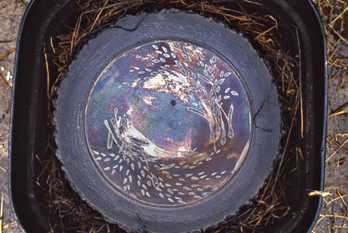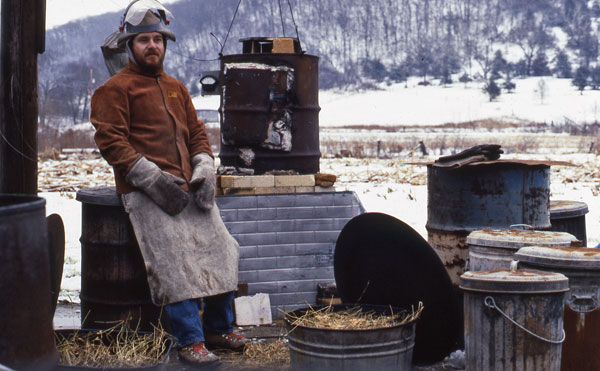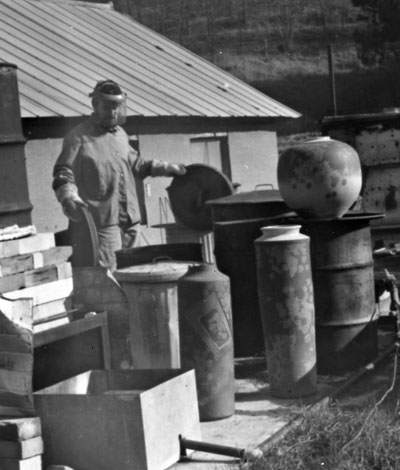
RAKU PROCESS
Raku work utilizes a firing process that leaves the clay slightly porous. Because it absorbs liquid after it is fired it is valued more fore its aesthetic than its semi-functional qualities.
These pieces were twice fired, first to about 1900 degrees Fahrenheit. After cooling they were decorated using combinations of four different colorants and two crackle glazes. The pieces were fired a second time to a similar temperature. After cooling to 1500 degrees Fahrenheit they were removed from the kiln and placed in an airtight fireproof container with combustible material. The heat retained in the piece causes the carbon in the combustible to enter the molecular structure of the clay. This reaction induces a color change in the clay body anywhere from white to black. The material can be straw, hay, sawdust, newspaper, leaves, pine cones or just about anything that will burn without exploding.

A copper based colorant can also undergo drastic color changes from reds, blues, yellows, magentas and everywhere in between depending on other ingredients in the glazes or stains and, perhaps more importantly, the degree of carbon received during the post firing process at a given temperature. It is imposable to adequately discuss all the variables that contribute to the final color of each piece. Technically it's a bit more complicated but after doing it for five years or so you begin to catch on.
The objects illustrated represent several series of work that were developed between 1979-89. A Crackle Glazed Series came about because of the visual aesthetic it emulates encouraging a sense of agelessness or perhaps the beauty of decay. Dried prairie plants that emerge every fall in Northeast Iowa on the hillsides surrounding Crystal Springs Studio inspired the Plant Series. The Window Series incorporated aspects of the previous two combined with rectangular shapes (a window reference for escape) developed into visual statements related to life during periods of transition and personal/artistic growth. It was personal. Somewhere between 500 and 700 pieces were produced.
